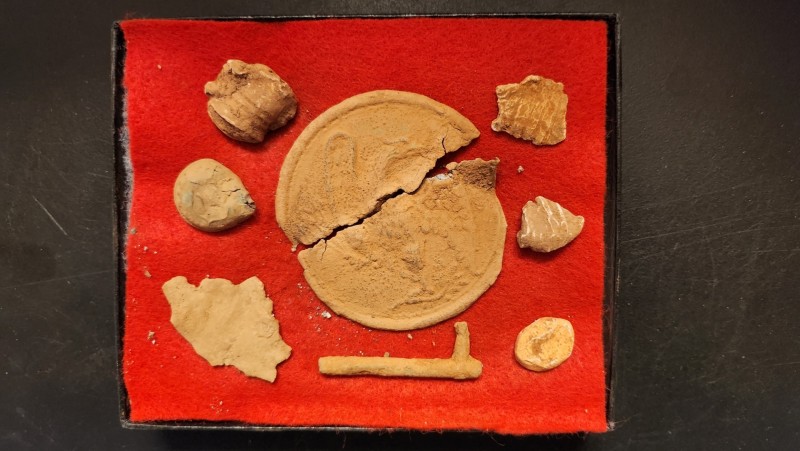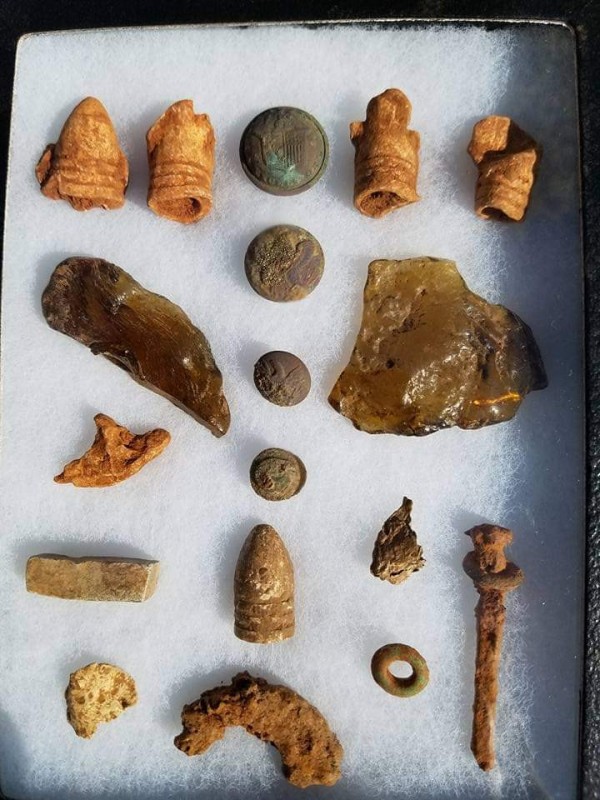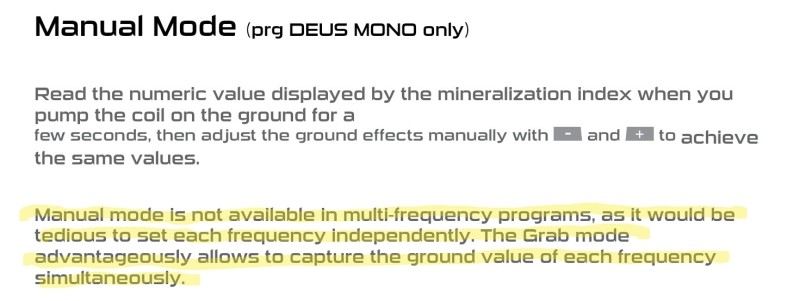-
Posts
6,130 -
Joined
-
Last visited
Content Type
Forums
Detector Prospector Home
Detector Database
Downloads
Everything posted by Chase Goldman
-
It's a non-issue as long as there is any continuous conductor present because neglible current is flowing and you just need continuity to the unshielded end. I doubt it will corrode enough to break or that you can actually visually monitor the progression to know when it will fail. The outer silver oxide corrosion layer may actually inhibit and slow down corrosion of the copper clad. Anyway, you'll quickly ascertain when it does fail (loss of signal submerged) so it makes sense to have a ready backup length of coax or spare OEM antenna assembly in standby.
-
Gotcha. I just figured the the further you run it up the metal shaft, the more attenuation occurs, with the mid point probably being the worst. The closer you are to either end of the upper less attenuation. Couldn't say where in the upper Parkgt terminated the waveguide so I just assumed it was being attenuated by the upper shaft metal. I'll have to run some tests myself because the "cut to suit" coax solution seems best. It also looks like that's where XP is headed with their new antenna pack.
-
Some context regarding the site would be helpful including geographic region where it was found.
-
See my explanation in the previous post above.
-
Yeah. That shouldn't be an issue. It's a wave guide so it's only radiating at the unshielded end of the coax (not along its length), so as long as there is no metal between the end of the waveguide and the receiver (remote or WS6) then there should be no issue even if it passes through metal. The problem people were having was if they terminated the waveguide run inside the metal shaft where the metal shaft was blocking the rf radiating from the end of the waveguide to the receiver If you do this, the radiating end of the coax needs to get close to the receiver or you can just terminate it in the non-metal CF lower shaft and it will work unless the waveguide tip gets submerged. Remember, the signal is normally transmitted from the coil all the way to the remote without the need for a waveguide, so as long as the coil transmitter or waveguide tip is neither submerged in water nor enclosed in metal (e.g., the waveguide run is not terminated within the upper metal shaft), then the wireless signal to the remote should be unimpeded.
-

Do I Trust My Manticore In The Water?
Chase Goldman replied to phrunt's topic in Minelab Manticore Forum
Thanks for pointing this out. Based on some of Tom's over the top proclamations (like Nox coils burning up if they were connected to the higher power Manticore) its not clear to me whether he has the expertise to actually be part of the ML M-core design team or just an outside expert user offering feedback as a consultant/tester to ML (one of many) that also happens to have a lot of loyal website users. To me the "horse" would be Mark Lawrie - ML's Chief Engineer. If Tom is speaking for ML as a designer with his "We" statement, it would be an interesting formal admission from ML that there were indeed some potential design shortcomings with the original Nox watertight design. Regardless, this is a great reminder that ML did get an IP68 rating for Manticore (and Equinox 700/900 for that matter). ML appears to have definitely improved Manticore and Nox 700/900 design in terms of waterproof integrity over the first gen EQX and the fact that they are able to actually specify an IEC Ingress Protection (IP) rating this time around (and not with the first gen Equinox which has NO advertised IP rating) which requires submission of documented test results to advertise the 5M submersion spec as IP68, is a good sign. Plus they have never been accused of not standing behind their warranty (and in some cases even beyond the warranty) on the original Nox with all the reported water intrusion issues. -
What type of soil are you digging in? I've never seen dug 160 year old brass come out of the ground looking like that even after cleaning it up. That's amazing.
-
Do you have it terminated at the remote or just have it running part way up the upper shaft, Dave? The question was whether you could run it part way up the upper shaft but leave it in the shaft. Doesn't work with the metallic upper, should work with a total CF shaft system.
-
One additional thought on this excellent post by Jeff - just as there is a point of diminishing returns (i.e., additional noise and lower stability (that manifests as chatter)) when increasing sensitivity, there is also a point of diminishing returns when lowering recovery speed. Besides the fact that users have reported little difference in their ability to hear fringe targets at the lowest recovery speeds vs. the typical defaults (4, 5, and 6), lowering recovery speed beyond what is necessary will also cause you to hear more ground noise which will be picked up as chatter in hot dirt as well as wet salt sand. So really, the name of the game is optimizing the settings to give you the desired separation and depth capability as well as minimizing chatter and ground noise (maximizing signal to noise ratio). Many people have noted that ML has done a pretty good job at setting the defaults for the user adjustable parameters such as sensitivity, recovery speed, and iron bias at pretty good starting points and only slight adjustments for site conditions usually all that is needed to make them optimal if they aren't already there.
-
Just another thought, there has to be a reason why ML is doing that (they may "have" to do it for some reason) because the reason other manufacturers don't is not because they can't, but because it results in a huge penalty in run time. ML went with a higher capacity battery to compensate for the drain just to keep run times reasonable. Manticore AND Deus 2 have certain program modes that result in higher power drain. So this more power thing may only be invoked during certain modes.
-
Beat me to it, Thomas. For F350 Platinum - Since SteveG's system is totally CF it may not be a problem to bring it further up the shaft, and may better for preventing drop outs when submerged. Not sure how those velcro wraps will hold up while scraping against hard packed sand in the surf wash. Not saying they won't, I just have no idea vs. plastic zip ties.
-
Bottom line, we don't know what 50% more power precisely means, ML and people supposedly involved with the design (e.g., The ML Chief Engineer, Tom Dankowski) have explicitly stated/written 50% more power to the coil as well as more power overall, ML has explicitly stated both that the power increased is in relation to "traditional detectors" and also, explicitly mentioned the Equinox. We know that from a physics standpoint this DOES NOT translate to 50% increased depth (not even close), and finally we can only speculate on what all of this really means or translates into regarding performance or capability. And that's exactly where ML wants us to be - speculating on how much magic is in their latest magic wand. Plenty of us here have seen this play out numerous times before, and it is always the same story, there are no great leaps or game changers here. Just a well designed detector that has some desirable features that some may or may not find useful and, of course, now a higher price point.
-
There is no question Manticore has higher gain but I can't see why that would require a 50% increase in power. I also tend to believe the lead engineer/designer of ML would want to be more precise than the marketeers and I do not believe he would repeatedly put out erroneous information about a very specific aspect of the design (i.e., power to the coil). I do agree ML is "selling it" by touting the more power thing as fact because it implies greater capability or performance, without having to actually specify what that actually is which, in turn, enables them to hide behind the ambiguity of something that sounds impressive (so they can't be held accountable for a false performance claim). There have been valid reasons postulated for increasing the coil power (specifically current) including as a means to improve EMI mitigation and because they had to to simply keep the transmitted magnetic field strength for the Manticore simultaneously transmitted discrete waveforms on par with single frequency transmitted field strength (though it seems Nox would need the same boost). Again, since ML chooses to withhold more technical information than it provides and has little regard for the intelligence of their end users based on their laughable, ambiguous marketing materials like the Equinox frequency cloud diagram that made no sense whatsoever (and were forced to amend with disclaimers and footnotes), it's indeed all just speculation and probably mostly hype.
-
True, but in this specific case (Manticore) ML is takling specifically about transmit power as they consistently touted "50% more power to the coil" compared to Equinox. Also, with digital signal processing it doesn't necessarily take more power to "amplify" the received signal in the sense of applying electric power to bias solid state amplification circuits, though it MAY take more processing power. But it's really all semantics at that point... Point is the Manticore "more power" thing was related to coil power. And all the tradeoffs referenced by Steve in his previous post apply. There is also some relevant discussion in this thread: Since we only get the very incomplete information the marketeers feed us, it's hard to determine what any of the mumbo jumbo really means in terms of actual performance. At this pointcwe rely solely on the documented empirical performance reports of, hopefully, unbiased, knowlegeable, and skilled end users.
-

M8 & M15 Coils Price And Availability?
Chase Goldman replied to Ringtail's topic in Minelab Manticore Forum
Link? -

M8 & M15 Coils Price And Availability?
Chase Goldman replied to Ringtail's topic in Minelab Manticore Forum
I'd say within 6 mos or so based on how long it took for the Equinox accessory coils to show up after the initial release of the Nox. -
A CW "Plate" (sword plate, breast plate, box plate, other belt buckles) is comprised typically of brass with lead backing holding tin or iron fasteners. They will typically ring up with the same audio and TID as a smashed aluminum can. On the D2, 89 to 91 depending on if it is fully intact. I dug about 50 or 60 beer cans and other trash under roadside power lines in hot Culpeper dirt before I scored the Breast Plate below. It sounded like all the rest of the cans - I found each broken half separately. Just pure determination and a hunch something like that might be hiding there because all that trash and EMI tends to repel the detectorists running Pulse Induction machines. It was a mustering area (on private farmland) for Union soldiers preparing to participate in a battle that was fought in the area.
-
Yep. Not talking air tests. See these threads...
-
Who says it isn't (or wasn't) already there? Feedback from D2 users who also have the M-core are reporting similar, significant depth on deep beach targets. But having the ability to manually adjust it (esp. down if it is maxed out) like with the D1 x35 coils, would be helpful in mineralized soils.
-

Small Field Relic Hunt, Silver Again!
Chase Goldman replied to F350Platinum's topic in Metal Detecting For Coins & Relics
I thought I was the lucky charm based on what you find whenever I come down. I've had the situation of finding a square nail pounded through a grommet. See lower left in the pic below:- 29 replies
-
- relic detecting
- relic found
-
(and 1 more)
Tagged with:
-

I Think The Manticore Falls Short On Saving Programs
Chase Goldman replied to khouse's topic in Minelab Manticore Forum
Yes. This is exactly how D2 works and why I find it can be best set up to suit my style of iffy target interrogation best of the MF detectors mentioned (Equinox, Manticore, Legend). I think the arrow navigation buttons and soft keys on M-core are an improvement versus the Nox in this regard, but still of limited usefulness. The OP makes a good point regarding the lack of multiple customizable profiles that combine discrimination and ferrous limit settings that can be applied to any mode as ML chose to solely provide this feature/capability for the ferrous limit profiles. -
Thanks, Gary. I've considered that and will do a comparison.
-
This is what XP says in the user's manual regarding why manual GB adjustment is not available for the FMF programs: To me it seems that since Grab is based off the displayed numeric value, you should be able to manually bias the setting by simply inputting another number. But I suppose that was why they included the Ground Stabilizer setting only for the FMF modes. Apparently some secret sauce stuff going on for the individual frequency constituents of FMF when you do a ground grab in FMF, and perhaps that's what takes so long. Who knows...
-

I Think The Manticore Falls Short On Saving Programs
Chase Goldman replied to khouse's topic in Minelab Manticore Forum
Predicore!




